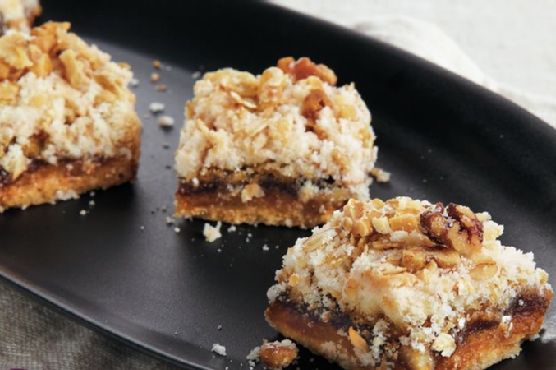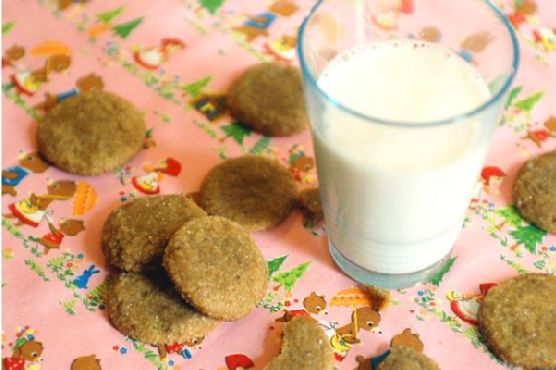Homemade Gluten Free Pasta
You can never have too many main course recipes, so give Homemade Gluten Free Pastan a try. This gluten free, dairy free, and lacto ovo vegetarian recipe serves 2 and costs $1.67 per serving. One serving contains 597 calories, 23g of protein, and 18g of fat. 231 person have tried and liked this recipe. From preparation to the plate, this recipe takes approximately 45 minutes. If you have corn flour, guar gum, eggs, and a few other ingredients on hand, you can make it. It is brought to you by Gluten Free Recipe Box. All things considered, we decided this recipe deserves a spoonacular score of 66%. This score is good. If you like this recipe, you might also like recipes such as Gluten-free Pasta With Homemade Tomato Sauce, Baked Chipotle Sweet Potato and Zucchini Fritters (vegan, gluten-free) with Homemade Spicy Honey Mustard (gluten-free with vegan option), and Homemade Paleo Diet Fig Newtons (Gluten-free and Dairy-free).
Servings: 2
Ingredients:
2/3 cup (70g 2.5oz) corn flour
4 egg yolks from large eggs
2 large eggs
1 teaspoon guar gum
1/2 cup (60g 2.125oz) potato starch
1/2 cup (70g 2.5oz) quinoa flour
1 teaspoon fine sea salt
2 teaspoons xanthan gum
Equipment:
bowl
stand mixer
baking paper
pasta machine
pot
Cooking instruction summary:
Sift the corn flour, quinoa flour, and potato starch into a large bowl. Add the xanthan gum, guar gum, and salt and stir. Sift the entire mixture into the bowl of a stand mixer.Put the eggs and egg yolks into the bowl of dry ingredients. Run the stand mixer on medium speed with a paddle attachment until the dough feels fully formed, about 3 minutes. The final dough should feel firm yet still pliable, a little like playdough.If you are using a pasta machine, cut the ball of dough into quarters and roll out each piece of dough to about a 1/2-inch thickness. We like to roll out each piece between 2 pieces of parchment paper. Lightly flour both sides of the dough with a bit more potato starch. Run the dough through the machine, increasing the setting each time, until the dough is paper-thin and long. If the pasta sheet starts to break, it is thin enough.If you are making the dough by hand, we suggest you cut the ball of dough into 8 pieces, and then cut each of those pieces in half, so they are about the size of golf balls. Roll out each piece of dough as thin as you possibly can.For fettuccine, use the fettuccine setting on the pasta machine. If you are cutting the dough by hand, you want ribbons of pasta, about 1/4-inch wide. For spaghetti, use the spaghetti setting on the pasta machine. If you are cutting the dough by hand, you want thin strings of pasta.For ravioli, cut the rolled-out pasta into 2-inch-square pieces. Dollop the filling in the middle of a square of pasta. Brush the edges of the pasta with an egg wash. Place another pasta square on top and press down, crimping the edges. (Having a ravioli cutter on hand helps with this process.)For lasagna, leave the pasta in long sheets.To cook the pasta, bring a large pot of salted water to a boil. Put the pasta shape of your choice into the boiling water. When the pasta rises to the surface, take a little piece and taste it. You should be able to bite into it without it falling apart. (With gluten-free pasta, it’s a fine line. One moment it’s al dente, and the next it’s one big ball of mush, so watch the pot.) Cooking times will vary for the different shapes. Fettuccine generally takes 4 to 5 minutes, spaghetti 3 to 4 minutes. Ravioli takes a little longer, about 5 to 6 minutes. The cooking times will differ in each kitchen, depending on how thin you were able to roll out the dough. Let your taste be the judge.
Step by step:
1. Sift the corn flour, quinoa flour, and potato starch into a large bowl.
2. Add the xanthan gum, guar gum, and salt and stir. Sift the entire mixture into the bowl of a stand mixer.
3. Put the eggs and egg yolks into the bowl of dry ingredients. Run the stand mixer on medium speed with a paddle attachment until the dough feels fully formed, about 3 minutes. The final dough should feel firm yet still pliable, a little like playdough.If you are using a pasta machine, cut the ball of dough into quarters and roll out each piece of dough to about a 1/2-inch thickness. We like to roll out each piece between 2 pieces of parchment paper. Lightly flour both sides of the dough with a bit more potato starch. Run the dough through the machine, increasing the setting each time, until the dough is paper-thin and long. If the pasta sheet starts to break, it is thin enough.If you are making the dough by hand, we suggest you cut the ball of dough into 8 pieces, and then cut each of those pieces in half, so they are about the size of golf balls.
4. Roll out each piece of dough as thin as you possibly can.For fettuccine, use the fettuccine setting on the pasta machine. If you are cutting the dough by hand, you want ribbons of pasta, about 1/4-inch wide. For spaghetti, use the spaghetti setting on the pasta machine. If you are cutting the dough by hand, you want thin strings of pasta.For ravioli, cut the rolled-out pasta into 2-inch-square pieces. Dollop the filling in the middle of a square of pasta.
5. Brush the edges of the pasta with an egg wash.
6. Place another pasta square on top and press down, crimping the edges. (Having a ravioli cutter on hand helps with this process.)For lasagna, leave the pasta in long sheets.To cook the pasta, bring a large pot of salted water to a boil.
7. Put the pasta shape of your choice into the boiling water. When the pasta rises to the surface, take a little piece and taste it. You should be able to bite into it without it falling apart. (With gluten-free pasta, it’s a fine line. One moment it’s al dente, and the next it’s one big ball of mush, so watch the pot.) Cooking times will vary for the different shapes. Fettuccine generally takes 4 to 5 minutes, spaghetti 3 to 4 minutes. Ravioli takes a little longer, about 5 to 6 minutes. The cooking times will differ in each kitchen, depending on how thin you were able to roll out the dough.
8. Let your taste be the judge.
Nutrition Information:
covered percent of daily need















